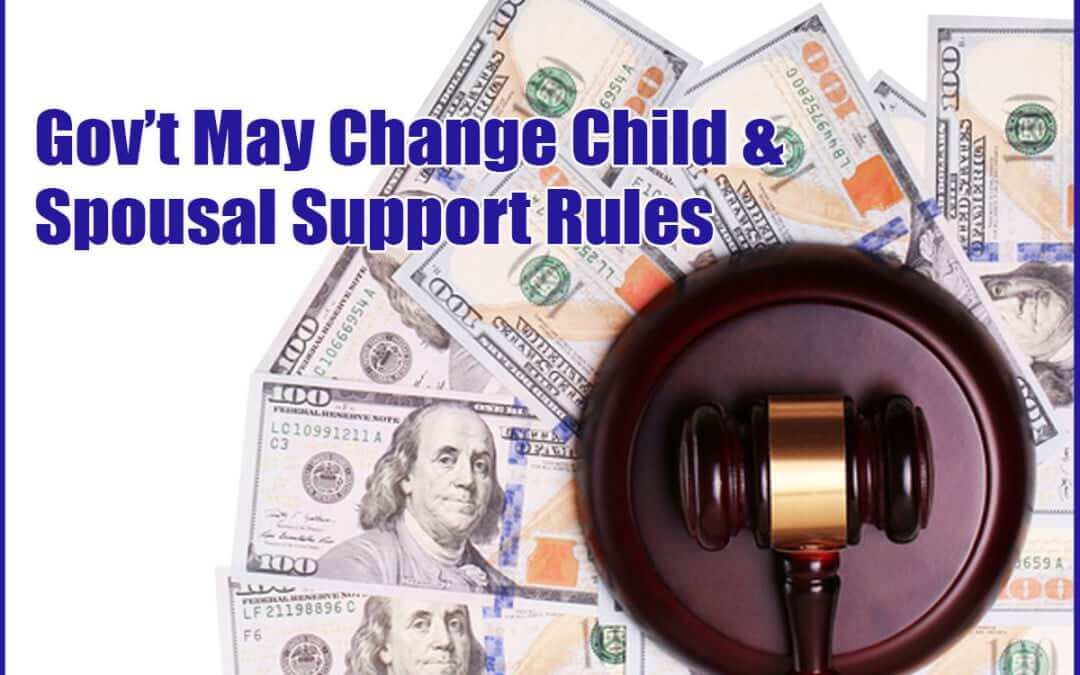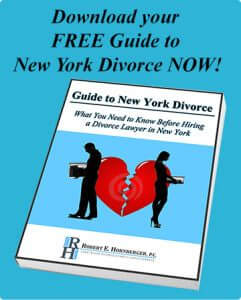As a Family Law Attorney and Divorce Lawyer practicing on Long Island, it is critical that I stay abreast of any potential new legislation that may affect my clients’ cases in Nassau County or Suffolk County Court.
One piece of new legislation that could dramatically affect my clients is Assembly Bill A7645. This new bill would significantly change the Spousal Support (AKA Alimony) as well as Child Support for families throughout Long Island.
The bill that has been passed in the New York State Legislature awaits the signature of Governor Cuomo to take effect. Assembly Bill A7645 sets forth guidelines for determining the appropriate amount and duration of both temporary and post-divorce spousal support, and will amend the Family Court Act (FCA) and Domestic Relations Law (DRL) in this regard. At present, the court must determine the level of spousal support based upon certain factors enumerated in the DRL. The enactment of Bill A07645 would provide specific formulas that will reduce the amount of court discretion involved in the determination of spousal support.
The new bill consists of new formulas for calculation of spousal support for both temporary and post-divorce maintenance, among other changes regarding modification and termination of support, which are outlined in some detail below.
Calculating Spousal Maintenance
Assembly Bill A7645 establishes specific formulas for calculating spousal support. The method of calculation will be different depending upon whether the paying spouse is also the noncustodial parent and will be ordered to pay child support, or if there are no children or the paying spouse is the custodial parent and therefore will not be required to pay child support.
Temporary Maintenance
In particular, the bill provides formulas for determining “temporary maintenance,” the spousal maintenance that is required as the divorce is pending, and post-divorce maintenance. First, the income cap for temporary maintenance is changed from the current $543,000 to $175,000 of the payor’s (higher earning spouse’s) income. For the purposes of the formulas below, if the payor’s income is greater than $175,000, any amount higher than $175,000 will be a matter for the court’s discretion.
Formula for Divorces With Children
In cases where the payor is responsible for both spousal and child support, the formula is as follows:
“(i) subtract 25% of the maintenance payee’s income from 20% of the maintenance payor’s income;
“(ii) multiply the sum of the maintenance payor’s income and the maintenance payee’s income by 40% and subtract the maintenance payee’s income from the result;
“(iii) the lower of the two amounts will be the guideline amount of maintenance.”
When a payor is responsible for both spousal support and child support, spousal support will be calculated first using this formula. After subtracting the amount of spousal maintenance that will be paid, child support is calculated by using the income of the payor minus the spousal maintenance paid, and the income of the payee including the spousal maintenance received.
Formula for Divorces Without Children
In cases where there are no children, or where the higher earning spouse is the custodial parent, the steps for calculating spousal support are as follows:
“(i) subtract 20% of the maintenance payee’s income from 30% of the maintenance payor’s income;
“(ii) multiply the sum of the maintenance payor’s income and the maintenance payee’s income by 40% and subtract the maintenance payee’s income from the result;
“(iii) the lower of the two amounts will be the guideline amount of maintenance.”
The formulas presented by the bill provide some level of predictability for couples with moderate to low incomes. There will be less court discretion involved in determining the amount of spousal maintenance when the amount of income for the higher earning spouse is at or below the $175,000 cap. However, courts will be permitted to consider certain additional factors in certain cases in order to prevent injustice. If courts choose to use such discretion, they must set forth the particular factors or circumstances in the decision. Additional factors might include termination of a child support award, actual, partial, or anticipated retirement, and income or imputed income on assets being equitably distributed. These factors may affect the amount or duration of support.
New Guidelines for Temporary & Post Divorce Maintenance
In addition to the numerical formulas above, the bill provides other new and important considerations for temporary or post-divorce maintenance. For calculating temporary maintenance, courts may allocate responsibility for certain family expenses while the divorce is pending. For post-divorce maintenance, courts now must also consider the income derived from any income-producing property that will be equitably distributed upon divorce. Finally, actual or partial retirement resulting in a considerable decrease in income must be considered as a grounds for modification of a spousal support order.
Calculating Duration of Post-Divorce Support
The bill also provides judges with suggested ranges for the duration of maintenance awards, which applies to post-divorce maintenance only. The ranges depend upon how long the marriage lasted.
For marriages of zero to 15 years, maintenance would be awarded for 15% to 30% of the length of the marriage.
For marriages of more than 15 up to 20 years, maintenance would be awarded for 30% to 40% of the length of the marriage.
For marriages of more than 20 years, maintenance would be awarded for 35% to 50% of the length of the marriage.
However, the court retains discretion to award post-divorce maintenance without limit as to duration in appropriate cases.
Other Notable Changes
The bill eliminates “enhanced earning capacity” such as a degree, professional license, celebrity goodwill, or career enhancement, earned by a spouse as a marital asset. These “enhancements” will no longer be considered an asset for the purpose of distribution of marital assets. The bill also amends DRL Section 248 (Modification of Judgment or order in action for divorce or annulment) to make it gender neutral, so that it will also apply to married couples of the same sex.
The bill awaits approval from Governor Cuomo in order to become law. The formulas will become effective 120 days after the bill becomes law, and will not apply to existing judgments or agreements.
Contact An Experienced Long Island Family Law Attorney to Learn How the Latest Legislation May Effect Your Divorce on Long Island
For more information about how this new bill might affect your divorce, or any other area of divorce or family law on Long Island, contact the Family Law offices of Hornberger Verbitsky, P.C. at 631-923-1910 for a complimentary consultation.
NOTES:
1. The bill can be found at: http://www.nysenate.gov/legislation/bills/2015/A7645. The Sponsor’s Memo can be found at http://assembly.state.ny.us/leg/?default_fld=&bn=A7645&term=2015&Memo=Y.
2. The terms “paying spouse,” “higher earning spouse,” and “payor” are used interchangeably in this memorandum. These terms are used to describe the spouse with the greater income, who is therefore the spouse responsible for paying support.
Download our Free New York Divorce Guide
Our 41-page “Guide to New York Divorce: What You Need to Know Before Hiring a Divorce Lawyer in New York” written by an experienced family law attorney Long Island’s Robert E. Hornberger, Esq., provides you with real information on the divorce process and the laws it rests upon in the state of New York. This book will help give you a solid foundation upon which you can begin the process of making your family’s, life better. Download your Free Guide to New York Divorce here.














